This is our first Thermophyllic cultured cheese from Artisan Cheese Making at home, Chapter 3, page 102.
The first cheese conversation with Deb and Ian at my house last July sounded like jibberish! Thermophyllic, mesophyllic, b-linens, calcium chloride, citric acid… some words I had never heard before and all ingredients I had never used. Now? The jargon rolls of my tongue like a popular rant … that I can’t ….get out of my head …. semantics widespread. Arg! But, I do understand it all! It is not so hard.
It just takes time.
Desire.
Patience.
Belief.
Wonder.
Passion.
Patience.
… and friendship. The collaboration has been key, for me.
I have made cheese alone. And it is a soothing time in the kitchen. Quiet and calming.
Yet, to share these “curd-crafted bundles of milky madness” (phrase coined by Liane Faulder) with a friend is more edifying.
Every single time, when the curd goes into the mold and is pressed, the kitchen is a disaster and I am pooped. How did this happen?
…with two, or more, of us calmly culturing our curd…
Instant gratification is addictive and around every corner throughout the cheese making process: the set, the break, cutting of the curd, stirring the curd, pressing the curd – and the knit… look at this gorgeous knit after the first press, above.
The second press creates clusters of clinging curds impossible to detect with the naked eye, yet they soak in the brine, then air dry. This happens the day after the cheese making session. Into the cave to age and be washed with a brining solution. It now seems so “old hat”. Ha!
The shared tastings are the ultimate celebration of this artisan process. Tasting the cheese alone is gratifying, but it is the sharing that breathes meaning and life through the tightly knit clusters of curd-crafted milky madness through the entire Cheesepalooza community!
I used Mary’s recipe from start to finish. Ian says it is a good recipe. We don’t copy the recipes from Mary Karlin’s Artisan Cheese Making at Home. We only include recipes when we alter, adjust, make a different recipe, or if her recipe includes too many errors and needs clarification.
The Task for our eighth Cheesepalooza Challenge:
If you have made it before, we challenge you to please do it again, “Mary’s way”, link to your other gruyere cheese making experiences, debriefing them all. Let us know what you think. Which recipe works best for your palate and your locality: Mary’s or the other ones you have used?
You will learn a new technique with this recipe: heating the curd without stirring it! I did have to move the curd so gently, during this process, from the sides of my vat as it is warmer there, to keep the heat evenly distributed.
IMPT: You will need wax for this cheese, but you do have time to order it now as your cheese ages a bit before waxing. Some people are finding the cream wax makes a nice base for the wax. Vacuum packing is always another option.
Optional Recipes to add value to your eighth month (only if you choose):
There are a few other recipes in Chapter three we suggest you explore and share through the month, if you want to make more than the Gouda:
- Alpine
- Tomme
- Jarlsburg
- Gruyere
- Manchego
Each one must be aged for 2 to 6 months.
Please include simple Tasting Notes at the bottom of each post (later, after you taste your cheese) so we can have a frame of reference to understand your cheese a bit better:
Tasting Notes:
- Appearance:
- Nose (aroma):
- Overall Taste:
- Sweet to Salty:
- Mild (mellow) to Robust to Pungent (stinky):
- Mouth Feel: (gritty, sandy, chewy, greasy, gummy, etc.):
Let the fun begin!






















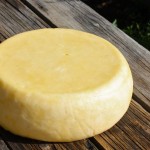
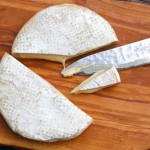
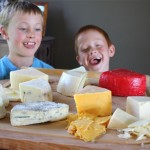
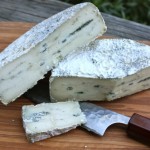
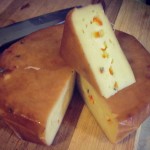
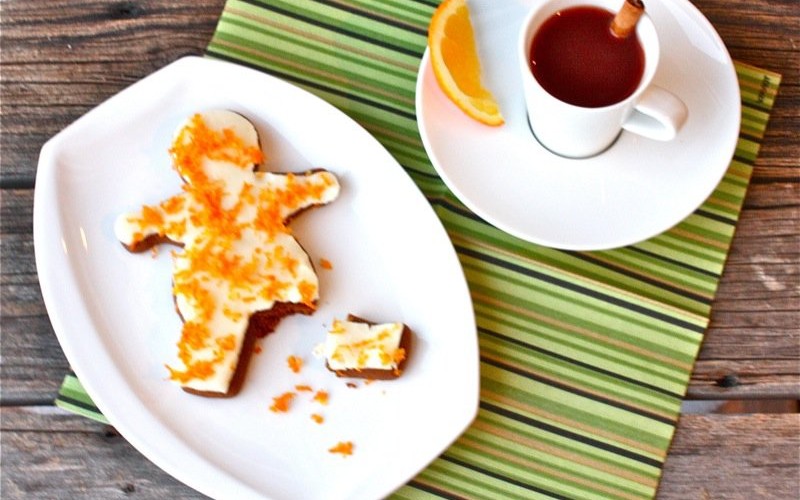





I have made Jarlsberg a number of times and wrote about it a while ago here:
http://briciole.typepad.com/blog/2010/07/formaggio-coi-buchi-fatto-in-casa.html
I have also made Manchego a number of times, aging it for various times. This is one with hazelnuts I made a while ago (aged 40 days):
http://www.pulcetta.com/2009/05/formaggio-e-ricotta.html
And this is my most recent Manchego, made following Mary’s recipe:
http://www.pulcetta.com/2013/03/formaggio-per-favore-cheese-please.html
I only aged it 10 days, because I wanted a young cheese. The post also talked about Leerdammer.
I have also made Tomme several times, but have no photos to share, sorry.
What a wealth of information, Simona,
Thank you!
🙂
Valerie
What a beautiful Gouda, Valerie – I am so impressed! Peter and I made Gouda once (mostly Peter) and while young it tasted fantastic, but when we tried to age it, we had trouble with mold and off-flavors. Oh well, we’ll learn 🙂
Did you wax it, Jessie?
I am so impressed with all the two of you do in the food world!
🙂
V